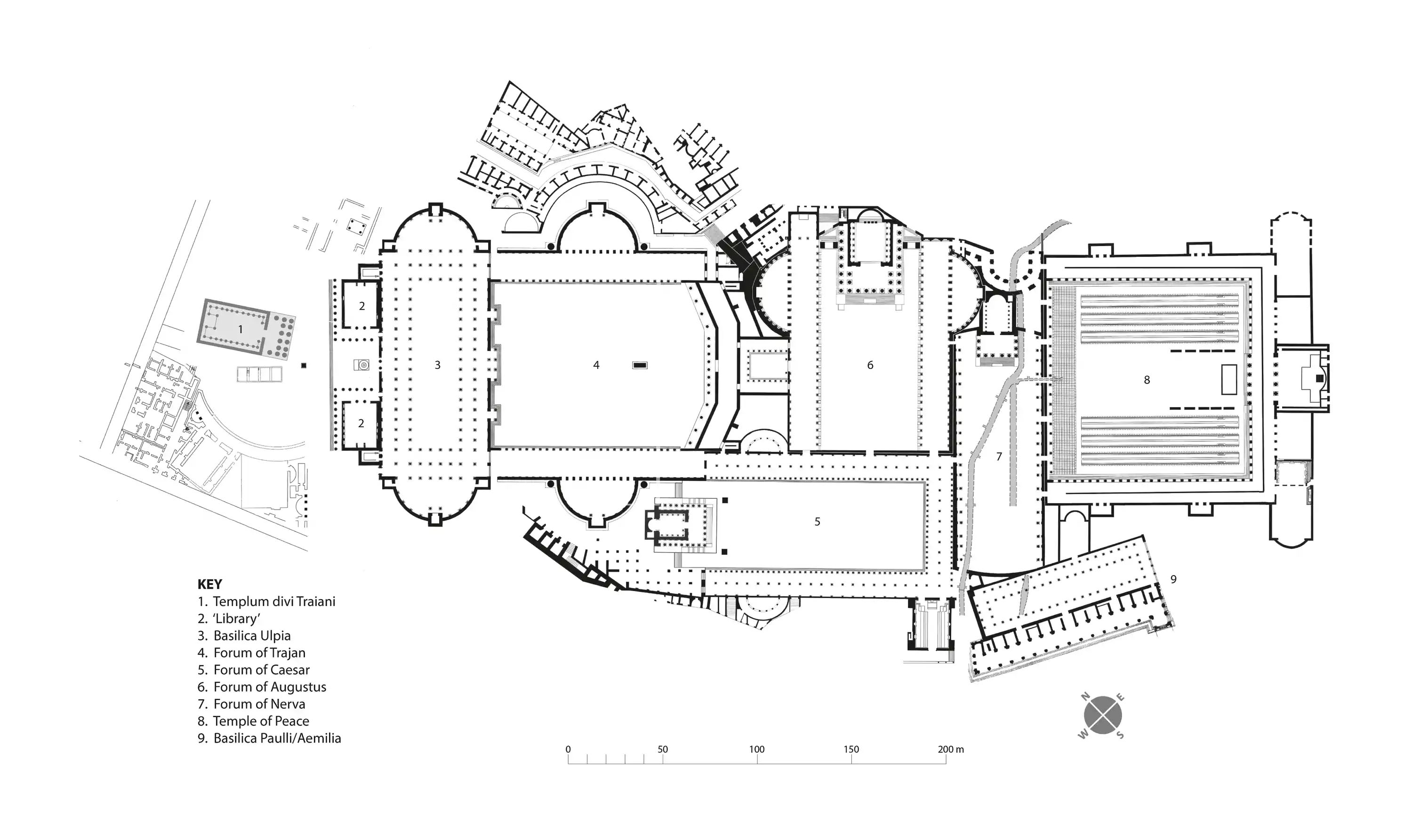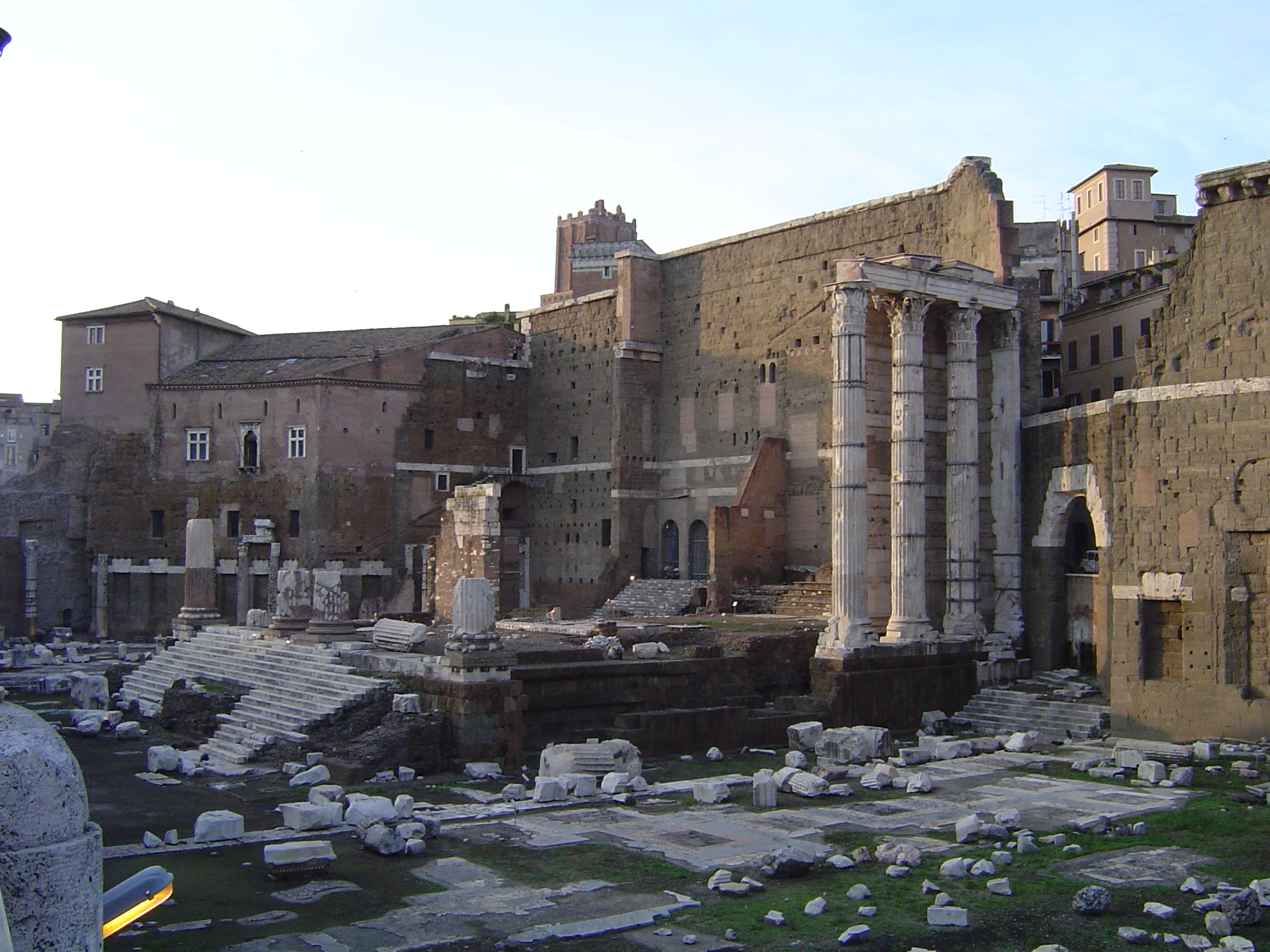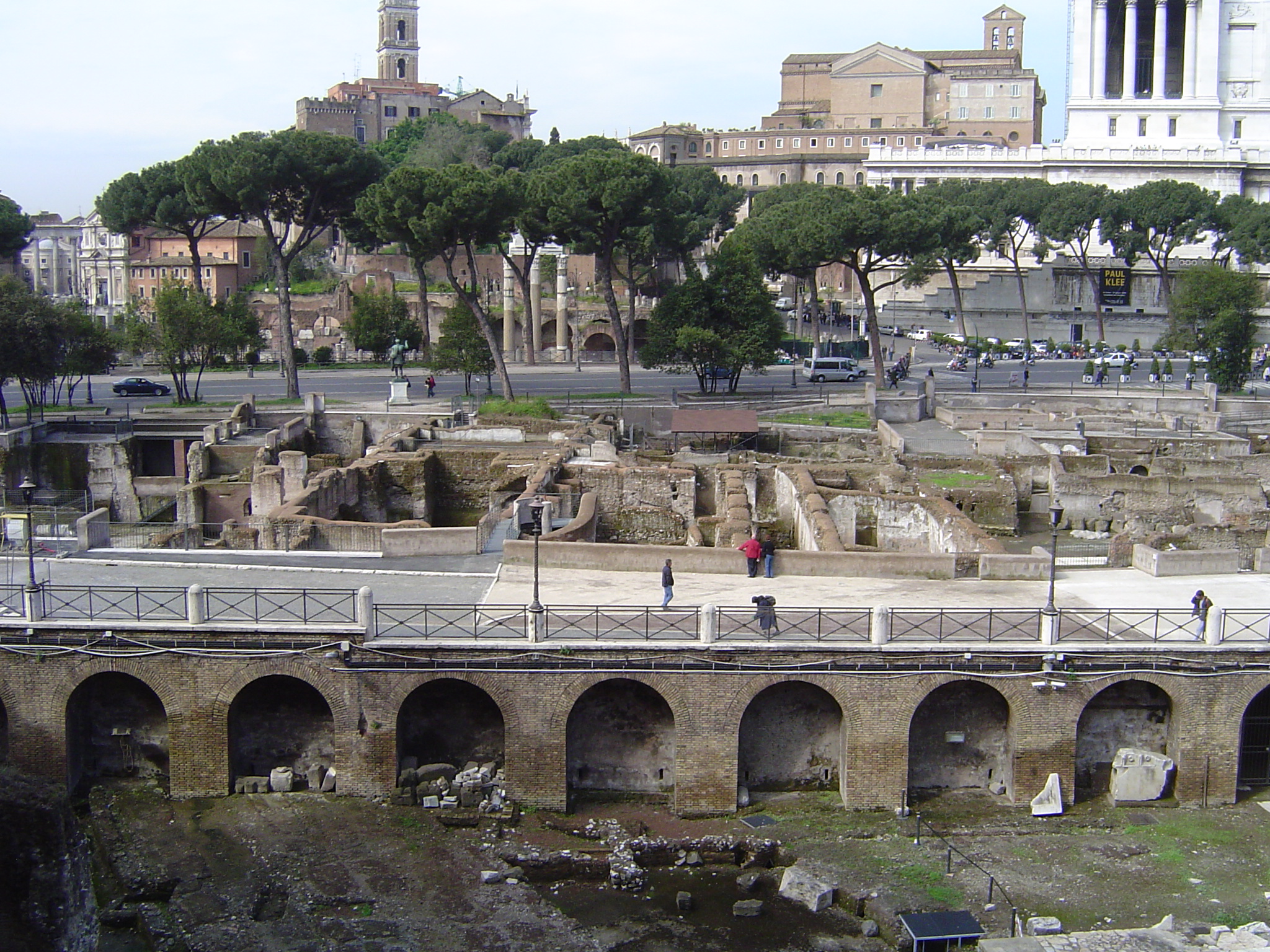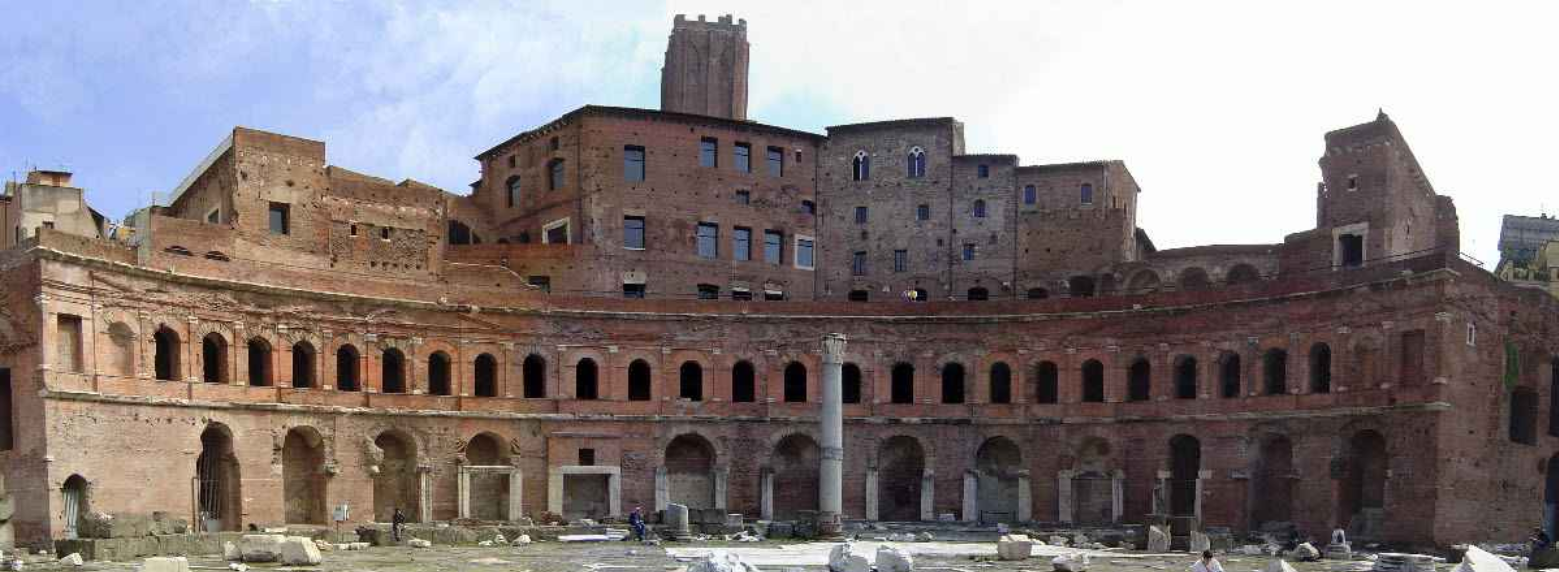Imperial Fora, UNKNOWN DESIGNER, Classical Roman, ROME, Italy, 100 AD
add: captions and vocab

Image 1: Plan drawing showing density of design not visible today

Image 2: Fragments of rubble of the Imperial Fora

Image 3:Fragments of rubble of the Imperial Fora

Image 4: Trajan’s Markets: a multistory, semicircular building

Image 5: Markets were curved in a semicircular shape
Today the Imperial Fora exists as a memory in ruins of the Classical Roman Empire. The Imperial Fora was an extension to its better-known neighbor, the Roman Fora. The FORUM (fora is plural) is the most public space in the Classical Roman city defined with various building types including markets, theaters, and religious and judicial buildings. The AGORA was the counterpart in a Classical Greek city. The plan of the Imperial Fora (image 1) reveals the density and richness in design that is difficult to see today.
At the Imperial Fora, a sequence of fora grew additively to define the larger whole. The organization is mostly orthogonal to create a lineage of spaces working sequentially from one end to the other. Though the city of Rome was not organized with CARDO and DECUMANUS axes, there are clues about the importance of perpendicular angles to the Classical Romans at the Imperial Fora. The Imperial Fora is an accumulation featuring several fora with a temple located at the end of a figural void space. The location of the temples accentuates the frontal quality of the temple, accessible only by a front porch and door to enter. Each of the temples were dedicated to different emperors including Hadrian, Augustus and Nerva. The temples often were embedded into a hillside or context that did not allow one to experience the rear of the temple. This further accentuated the frontality of each temple.
The procession from each space is accentuated by a clear axial organization. In addition to the temples, there were other building types and elements at the Imperial Fora including a market, basilica and Trajan’s column. Proceeding from the Temples of Venus, to Minerva to Mars, one would continue to the Forum of Trajan. Here an expansive opening revealed a large semicircular multi story building known as Trajan’s Markets (image 4). These markets were essentially stoas curved in a semicircular shape, minus the double row of colonnades found at Stoa of Attalos (image 5). The markets climbed up the hillside, reinforcing the frontality at the site. Trajan’s Markets is one of the best preserved and complete spaces in the Imperial Fora today.
Next in the series is the Basilica Ulpia. The basilica in Classical Roman times was the judicial law court. It was defined with a large central area (covered with a roof) and flanked by rows of columns creating side aisles. The basilica became a gathering place centrally and facilitated movement with circulation along the edges. The basilica was an important precedent because the function of this building typology transformed with the advent of Christianity. This floor plan was borrowed from the Classical Roman civilization, though its previous function was completely erased. It became the prototype for Early Christian floor plans. The large central zone was a gathering area for the congregation. The side aisles facilitated movement of the congregation during religious ceremonies.
All throughout the Imperial Fora are scattered fragments of rubble, part of a temple and columns (images 2 and 3). With the rise of Christianity, previous buildings related to pagan connotations (religion worshipping multiple deities) were pillaged and repurposed for Christian architecture. Few excellently preserved pagan temples remain today. The few that endure, such as the PANTHEON quickly transformed to a Christian purpose.
Media Attributions
- Imperial Fora Plan © Fletcher STeele is licensed under a Public Domain license
- Photo of Imperial Fora © Aimee Moore is licensed under a CC BY-NC (Attribution NonCommercial) license
- Photo of Imperial Fora © Aimee Moore is licensed under a CC BY-NC (Attribution NonCommercial) license
- Trajans Market Imperial fora © Aimee Moore is licensed under a CC BY-NC (Attribution NonCommercial) license
- Interior Hallway Detail at the Imperial Fora © Aimee Moore is licensed under a CC BY-NC (Attribution NonCommercial) license
figural void (lack of mass) in an urban context in a Classical Roman city, plural is for a
most public area in a Classical Greek city, often defined as a figural void with buildings loosely defining edges
